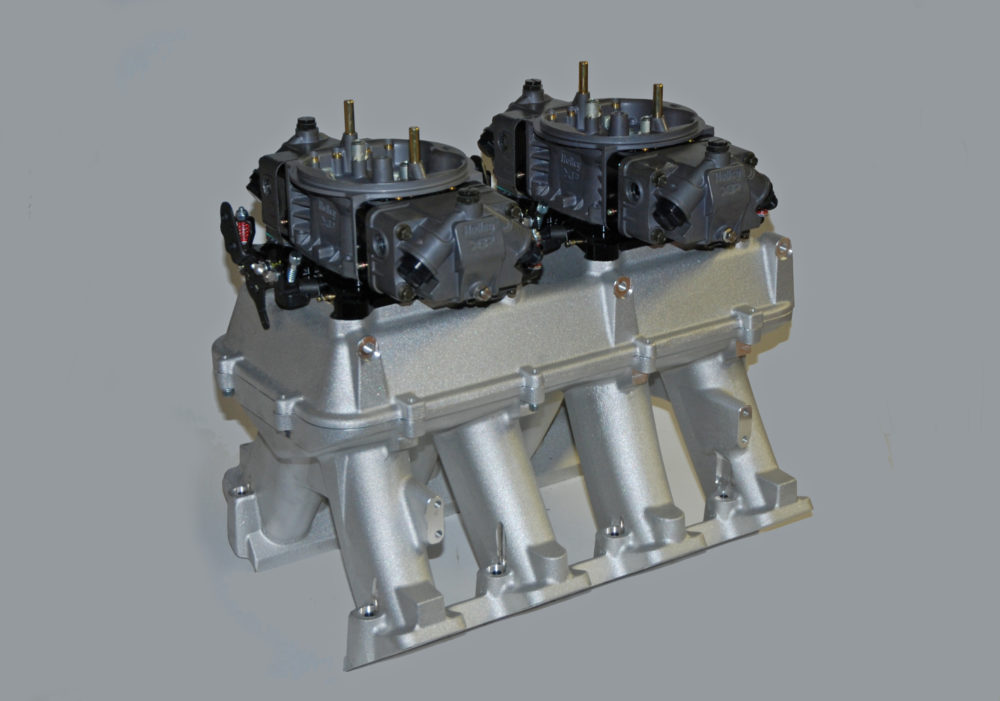
(Image/Wayne Scraba)
Tunnel ram manifolds made their debut in the early 1960s.
The first ones were actually small block Chevy jobs patterned off a Rochester mechanical fuel injection intake manifold (drag racer Carroll Caudle should be credited for the invention). Soon after, a company owned by Ralph Ridgeway cast a commercial example, followed shortly thereafter by other name brands. Examine a vintage Corvette Rochester FI manifold and you’ll immediately see the heritage of the tunnel ram.
Intake design has improved dramatically through the years, however with a tunnel ram, some things remain the same.
A tunnel ram intake manifold provides the highest horsepower potential of any manifold because the runners have a straight shot from the carburetor throttle bores the cylinder head ports. Mount a pair of 4-barrel carburetors on top and you’ll find the runner lengths are typically very consistent (getting runner lengths the same is pretty much impossible with any other form of carbureted intake manifold—including any of the modern single-plane jobs).
Up top, the plenum is usually large and, in some cases, tall. All of this amounts to an intake manifold offering the least restriction of anything out there.
The plenum and runner volumes of the tunnel ram are critical to its performance. The engine displacement and operating range dictate the size of the plenum and runners.
Years ago, the great Bill “Grumpy” Jenkins noted in his “Chevrolet Racing Engine” book that runner volume was easy enough to analyze, but getting the plenum volume correct proved to be another matter.
That’s because the size and, to some extent, the shape of the plenum, dictates the car’s drivability. You can’t nail down drivability with a flow bench or a dyno. David Reher confirms this in his racing engine books: “… if you increase plenum volume beyond the minimum that the engine really needs, any small power gains that show up on the dyno are more than offset by the loss of low speed torque and throttle response. In testing, we reduce the size of the plenum and ports until we begin to see substantial losses. This approach always results in the best on-track performance.”
All of this makes for the most powerful intake manifold configuration available today.
But it can come with a price. Some tunnel rams don’t start building big power until the engine speed is above 7,000 rpm because the tunnel ram tends to trade off low-end torque for high-rpm power.
In terms of use, a tunnel ram pretty much mandates a hood scoop, and depending on the car and engine location, the scoop can be pretty tall. That’s because you need at least four inches of clearance between the top of the carburetors and the top of the scoop. Without proper clearance, airflow is restricted.
Modular Hi-Ram Intakes: An Affordable Alternative to Hand-Fabbed Sheet Aluminum
Over the years, tunnel rams have been manufactured as castings or later as sheet metal components. The manifolds hand fabricated from sheet aluminum aren’t cheap. So what’s a guy on a modest budget to do?
If you have an LS engine, you’re in great shape. When Holley crafted its clean-slate LS EFI intake manifolds, they took into account the needs of a carbureted engine. Holley LS Modular Hi-Ram intake manifolds are the result. They’re engineered to be a cost-effective alternative to sheet metal intakes for unlimited high horsepower applications—particularly where the overall height of the system isn’t limited.
How good are these intakes? With an EFI lid, Chevy uses them exclusively on their naturally aspirated drag race COPO Camaros. But I digress.
From the beginning, these new breed Holley tunnel rams were intended for use on N/A or forced-induction engines in the 6.0 to 7.0+ liter range with max power at 7000-8000+ rpm. A factor in designing a tunnel ram is to figure out the right runner size (which includes the runner taper and the runner length). Runners in the Holley manifold are carefully tapered—ranging from 4.25-square inches to 2.77-square inches. The runner length measures 6.50-inches and, of course, all of the runners are the same size and length. Ports at the intake for our LS3 example (which you can see in the accompanying photos below) measure 2.49-inches high x 1.21-inches wide. And yes, there’s plenty of room for porting. Essentially though, the runner-port-plenum package Holley came up with on their Modular High Ram allows the intake to be used in a wide range of applications.
In terms of overall height, with the dual carb top attached, the manifold measures 11.08-inches tall, front and back. Holley points out this measurement is from the carb mount flange to the top of the lifter valley cover flange on the cylinder block. Without the plenum installed, the manifold measures 8.42-inches to the lifter valley cover flange on the engine block.
Having a removable plenum offers many options to racers and engine builders. First and foremost, it makes for exceptionally easy port work. Without the plenum top installed, working on each runner is a piece of cake (think of the work you have on a single-plane intake and compare it to this). And as mentioned above, the manifold can be purchased with an EFI top, or you can specify a dual 4150 Holley carb top as shown in the accompanying photos. You can also specify a dual 4500 Holley carb top. A blank top (no holes) is also available.
Basically, Holley has all of the induction bases covered with the Modular Hi-Ram.
One more thing: This intake is robust enough that it can be used in forced-induction applications (for example, something with a centrifugal blower or two, and—to us, at least— that would prove really interesting).
Don’t Forget Tunnel Ram’s Torque Characteristics
Something you’ll want to consider when selecting a tunnel ram for your application is the rpm range.
You can’t expect a tunnel ram to be too happy on a 4×4 or a low-rpm street cruiser.
But it will certainly function well on something with a good set of heads, a loose converter, a properly matched valve train, and a steep rear axle ratio.
If you’re willing to work the engine in the upper reaches of the power band, then you’ll likely be happy with a tunnel ram. For a closer look at Holley’s Modular Hi-Ram, check out the photos below.
This intake is definitely a maximum manifold.
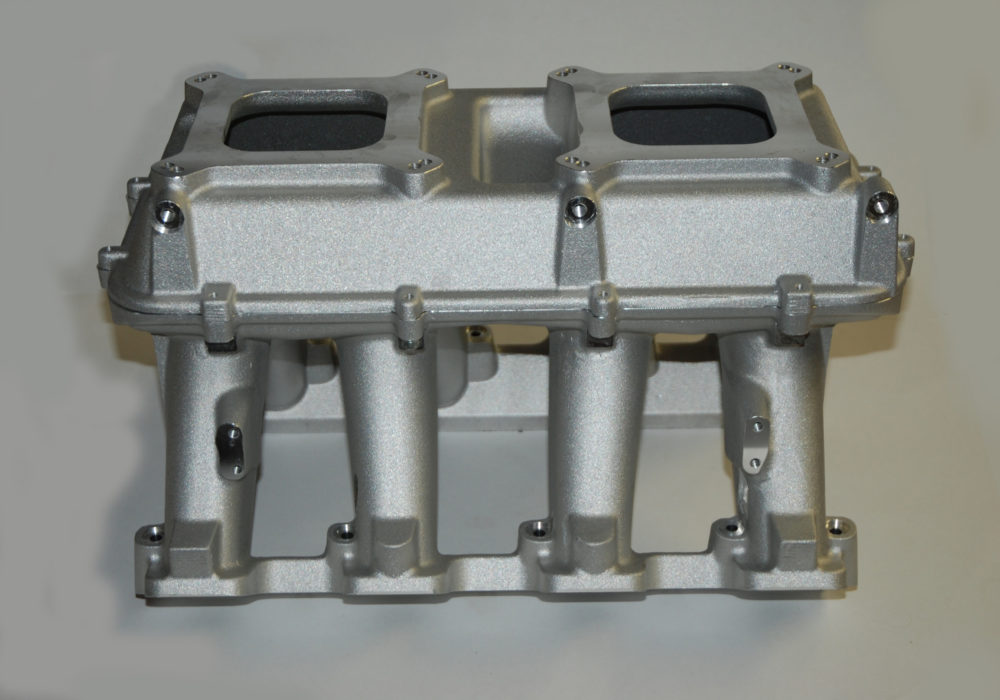
Holley’s Modular Hi-Ram intake was engineered from a clean sheet of paper. It features interchangeable tops, and depending upon the top, can be used in carbureted or EFI applications. (Image/Wayne Scraba)
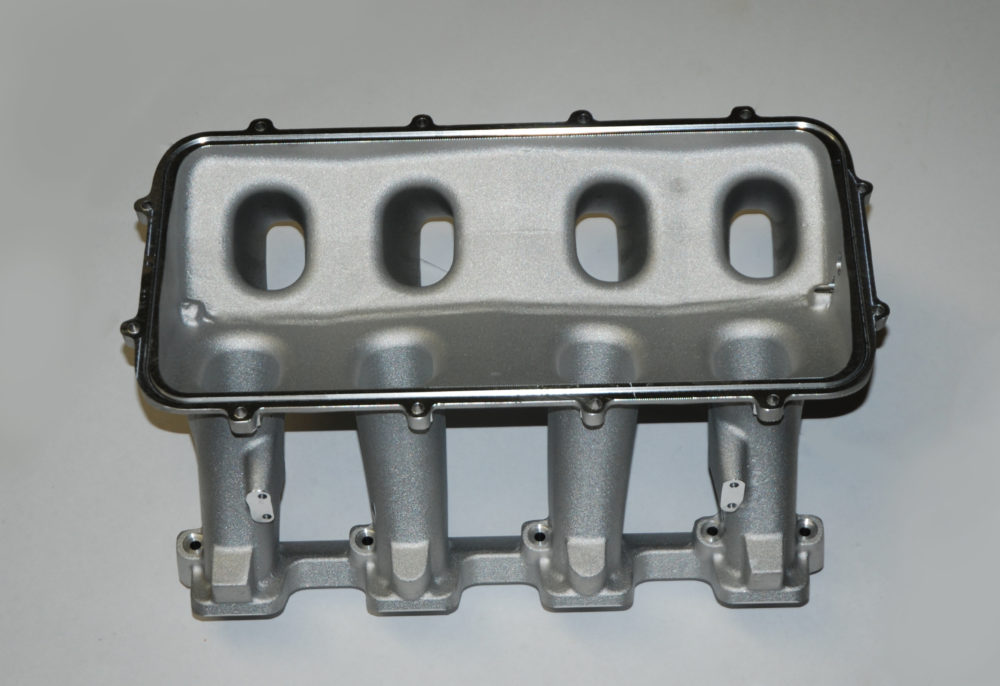
With the top removed you can see the tapered intake runners. As cast, they measure 4.25-square inches at this end. Obviously, the way the intake is manufactured; you have plenty of options with regard to porting. (Image/Wayne Scraba)
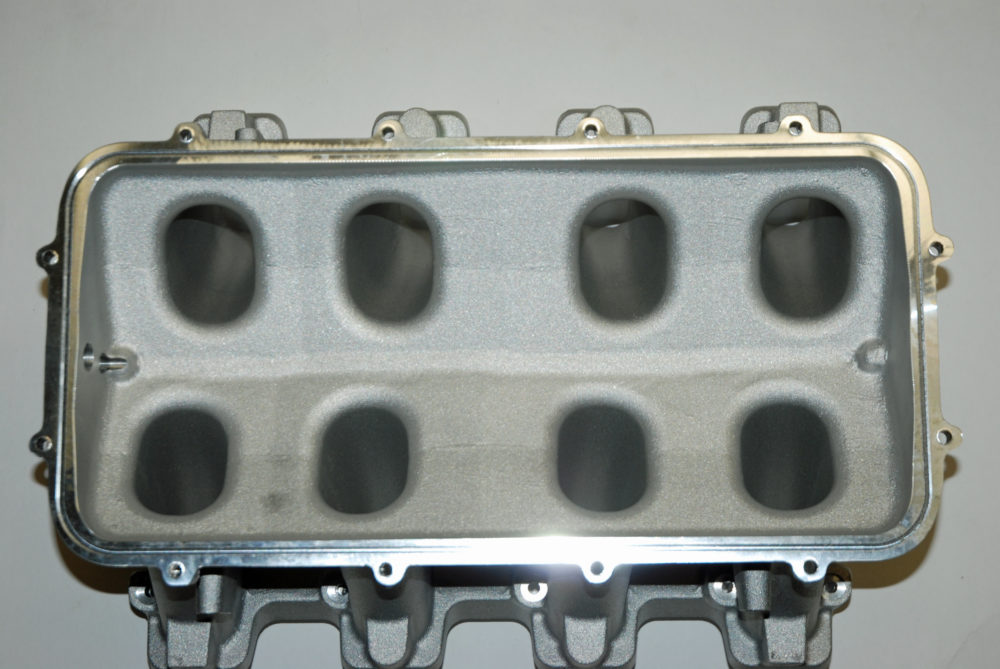
With the top removed you can see the tapered intake runners. As cast, they measure 4.25-square inches at this end. Obviously, the way the intake is manufactured; you have plenty of options with regard to porting. (Image/Wayne Scraba)
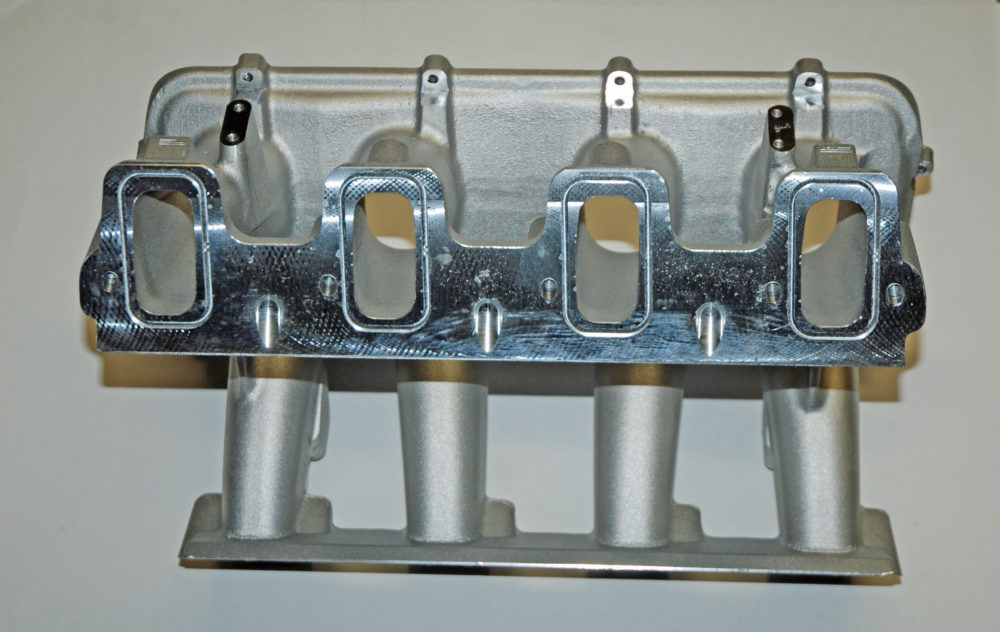
At the cylinder head port, the manifold runners measure 2.77-square inches. This particular intake is designed for common LS3/L92 combinations. Holley also offers them for LS7 head layouts along with LT engines and more. (Image/Wayne Scraba)
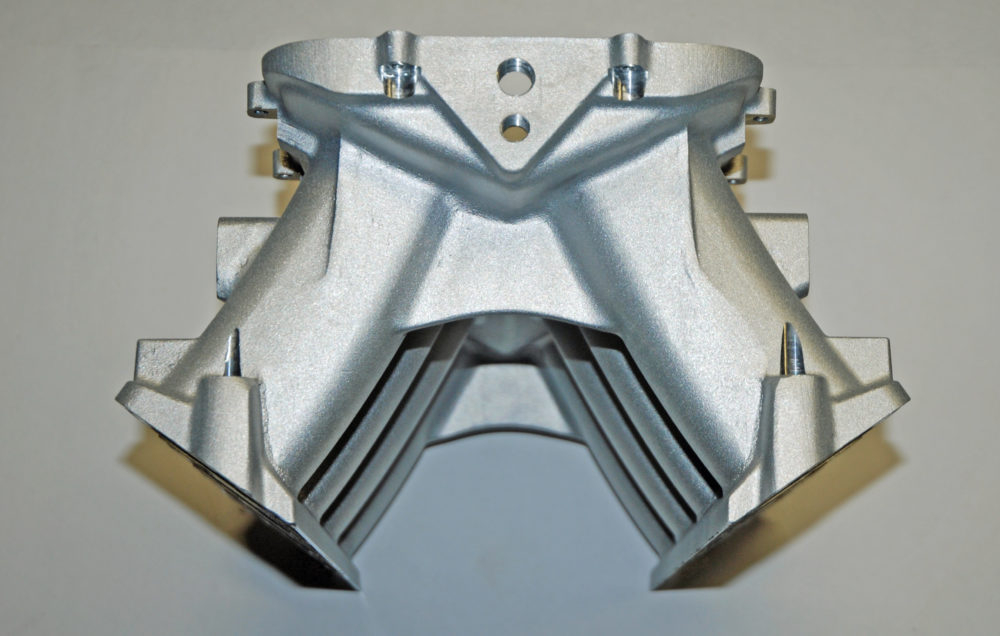
When it comes to the port taper, you can see it easily in these photos. The runner length works out to 6.50-inches. All of the runners have equal dimensions. You can’t get that with a conventional single plane intake. (Image/Wayne Scraba)
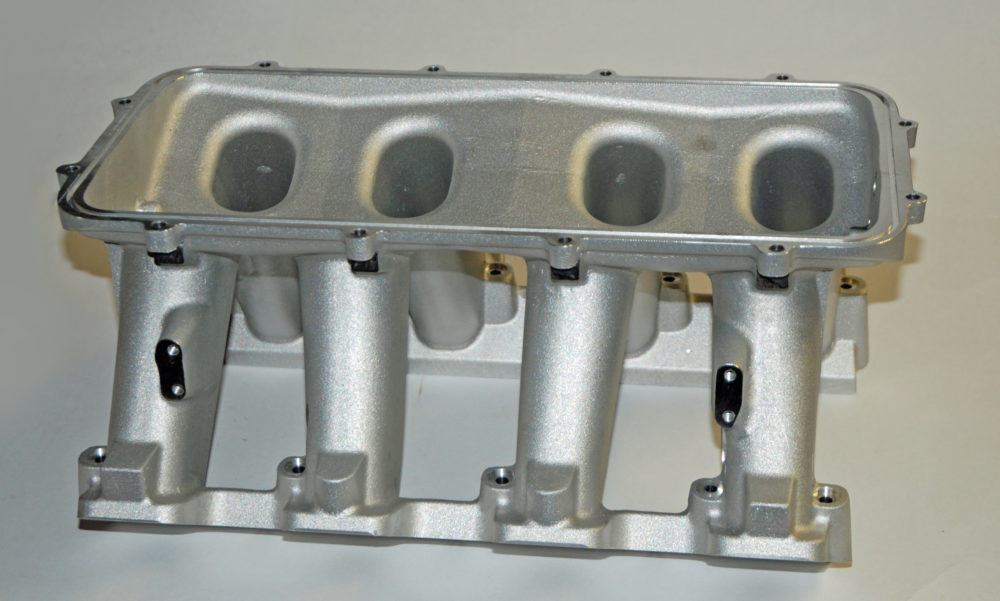
When it comes to the port taper, you can see it easily in these photos. The runner length works out to 6.50-inches. All of the runners have equal dimensions. You can’t get that with a conventional single plane intake. (Image/Wayne Scraba)
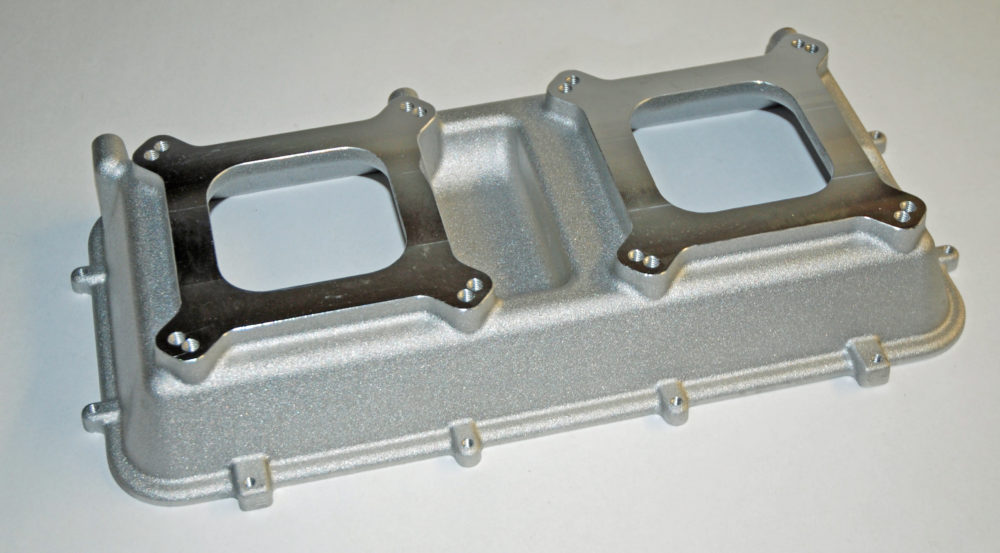
This is the removable 2 X 4150 four-barrel plenum top Holley engineered for their Hi-Ram. Plenum volume has been carefully calculated and tested. What’s up with the casting bulge on the inside? It serves two purposes—it reduces the volume plus it allows for linkage clearance on a sideways mounted carburetor. Note the gentle radius at the throttle body transition. (Image/Wayne Scraba)
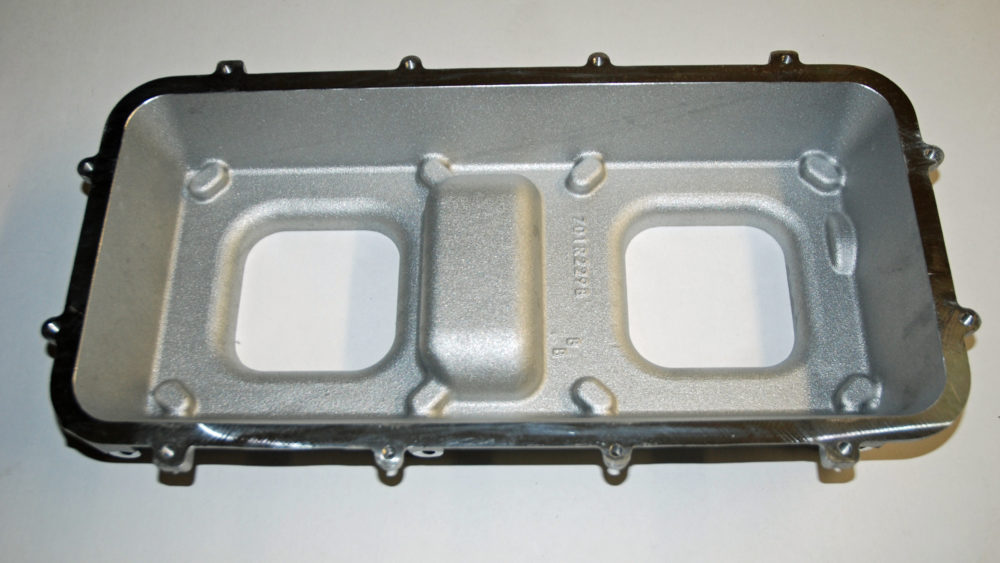
This is the removable 2 X 4150 four-barrel plenum top Holley engineered for their Hi-Ram. Plenum volume has been carefully calculated and tested. What’s up with the casting bulge on the inside? It serves two purposes—it reduces the volume plus it allows for linkage clearance on a sideways mounted carburetor. Note the gentle radius at the throttle body transition. (Image/Wayne Scraba)
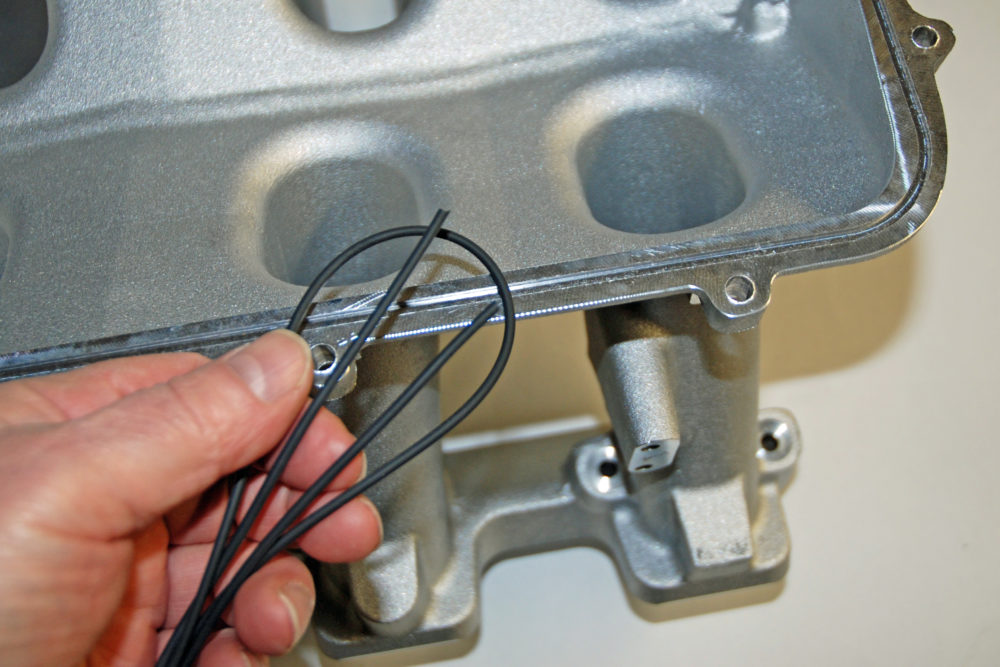
The top is installed by way of a series of common bolts and it’s sealed by way of an O-ring. Holley supplies the O-ring with the intake. (Image/Wayne Scraba)
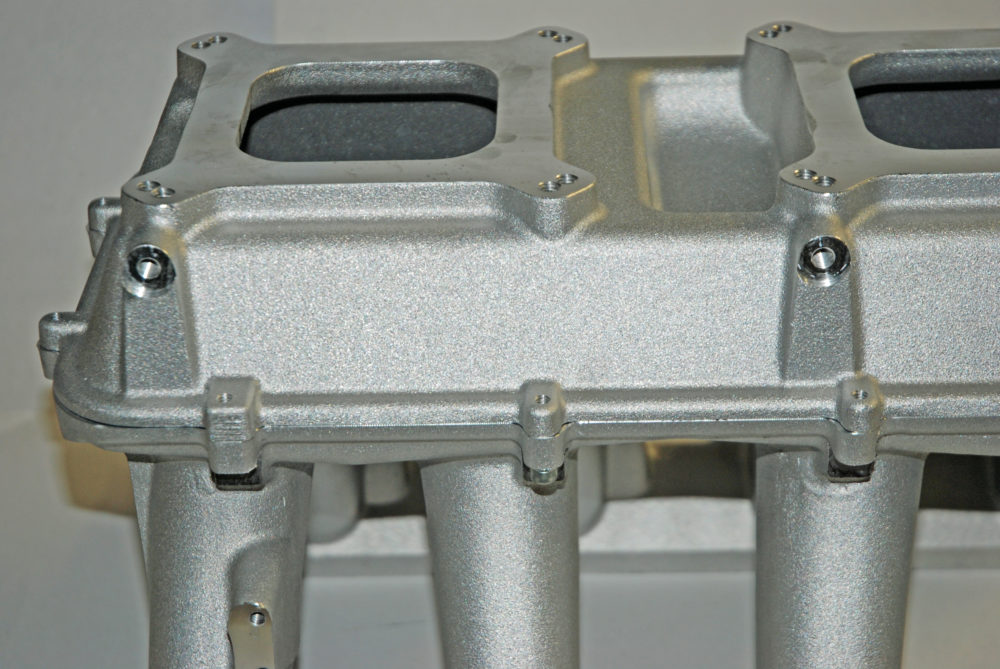
The top is installed by way of a series of common bolts and it’s sealed by way of an O-ring. Holley supplies the O-ring with the intake. (Image/Wayne Scraba)
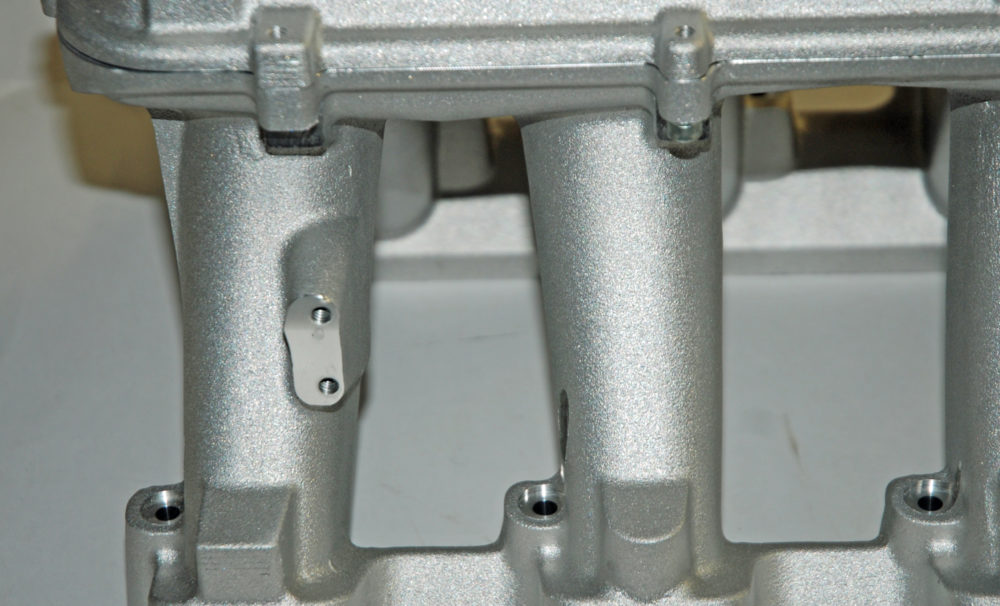
Holley includes bosses for carb linkage on the manifolds. You can specify the base drilled for fuel injection or without, however the bosses are still present. That makes for a handy location for direct port nitrous, but that’s another story. (Image/Wayne Scraba)
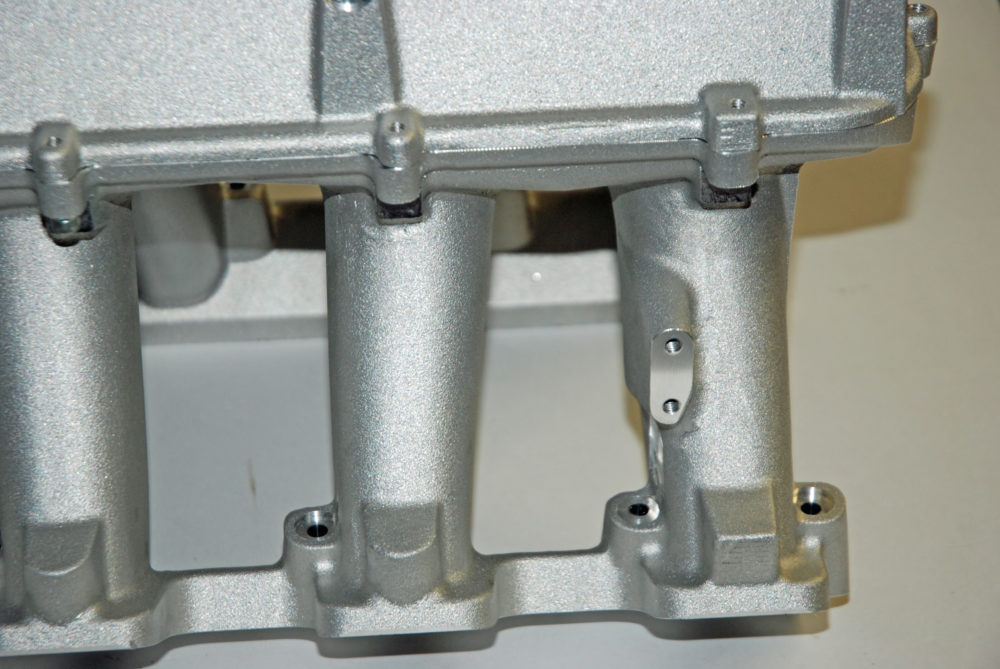
Holley includes bosses for carb linkage on the manifolds. You can specify the base drilled for fuel injection or without, however the bosses are still present. That makes for a handy location for direct port nitrous, but that’s another story. (Image/Wayne Scraba)
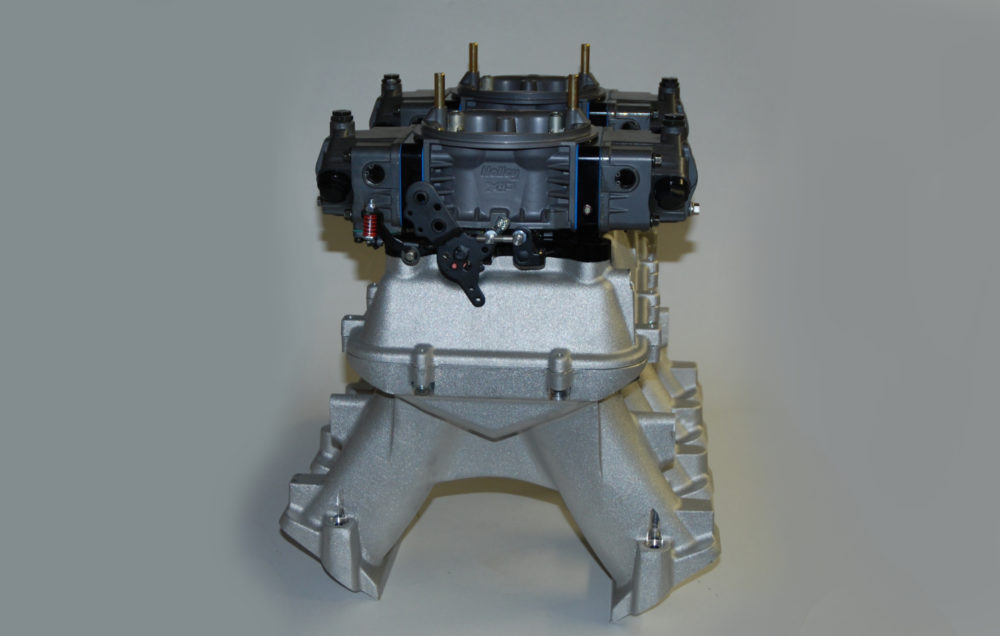
There’s no question a tunnel ram is a tall package with the carbs installed. With this set of Holley 650’s topside, the intake is just over 14-inches tall from the bottom of the port flange to the carburetor air pan flange. Keep in in mind you’ll need approximately 4-inches of clearance between the carb top and the top (inside) of a hood scoop. (Image/Wayne Scraba)
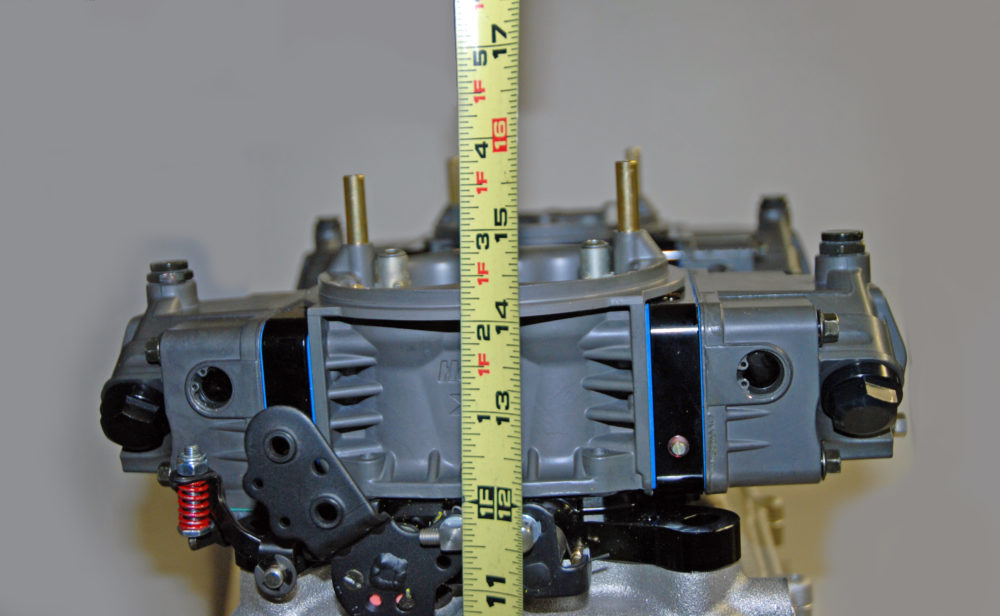
There’s no question a tunnel ram is a tall package with the carbs installed. With this set of Holley 650’s topside, the intake is just over 14-inches tall from the bottom of the port flange to the carburetor air pan flange. Keep in in mind you’ll need approximately 4-inches of clearance between the carb top and the top (inside) of a hood scoop. (Image/Wayne Scraba)

What would you call the intake on the Ramcharger’s “High and Mighty”? I think it predates the GM Fuelie by a couple of years.
How much does a tunnel Ram manifold cost for an LS3 Chevy engine
Give our partners at Summit Racing a call (1-800-230-3030), and they’ll be able to provide the latest information.
Call me back